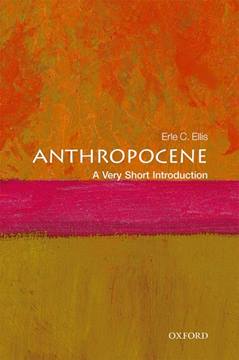 Imagine a scientist in the distant future, studying the Earth. Some distant relative of humans perhaps, or something more exotic. They are tasked with defining the Earth’s stratigraphic record. How similar would it be to humanity’s effort? And would they notice a boundary around the time that homo sapiens arrived on the scene? Perhaps they would find disturbances in the carbon isotope record, or a sudden spike in a particular radioactive element across rocks of a certain age. Or maybe they would find nothing. Welcome to the problem of defining the current epoch: the Anthropocene.
Imagine a scientist in the distant future, studying the Earth. Some distant relative of humans perhaps, or something more exotic. They are tasked with defining the Earth’s stratigraphic record. How similar would it be to humanity’s effort? And would they notice a boundary around the time that homo sapiens arrived on the scene? Perhaps they would find disturbances in the carbon isotope record, or a sudden spike in a particular radioactive element across rocks of a certain age. Or maybe they would find nothing. Welcome to the problem of defining the current epoch: the Anthropocene.
In this Very Short Introduction, Professor Ellis illustrates the issues of establishing a new epoch beautifully and also gives an excellent history of the Anthropocene’s development as an idea. From Paul Crutzen and Eugene Stoermer coining the term to the formation of a special working group of the Subcommission of Quaternary Stratigraphy, the conceptual development of this epoch is as interesting as the problem of defining it.
To mark the beginning of a new epoch, a universally agreed, isochronous, and measurable point in time must be agreed upon. Human influence on the environment has occurred since we first evolved. The discovery of fire, tool making, and hunting have all left their mark. Agriculture in its various guises has changed landscapes and ecosystems permanently. The industrial revolution has had a global influence and the effects of fossil fuel use dominate politics, science, and modern living today.
However, the complexities of human environmental influence do not make for an easy task and the evidence involved is a combination of the work of geologists, archaeologists, environmental scientists, philosophers, politicians, geographers, oceanographers… The list could go on. Anthropocene covers this evidence in great detail giving the reader plenty to think about, while always maintaining an objective view of the problem. Various, interesting nuggets of information are distributed throughout; did you know that there are around 5,000 natural minerals on Earth? Compare this to the 170,000 synthetic ones that have been identified.
What is the purpose of all this effort? We know that the planet is changing in response to our actions. Does defining an Anthropocene give humanity a wake-up call to preventing further climate change? Or does it merely assert dominance over nature? Perhaps we can answer these questions. Or maybe it is for the scientists of the distant future to uncover.
Reviewed by Jonathan Scafidi
ANTHROPOCENE: A VERY SHORT INTRODUCTION by ERLE C. ELLIS, 2018. Published by Oxford University Press, 183pp (pbk) ISBN: 9780198792987. List Price: £7.99. W: https://global.oup.com/academic/product/anthropocene-a-very-short-introduction-9780198792987?cc=gb&lang=en&